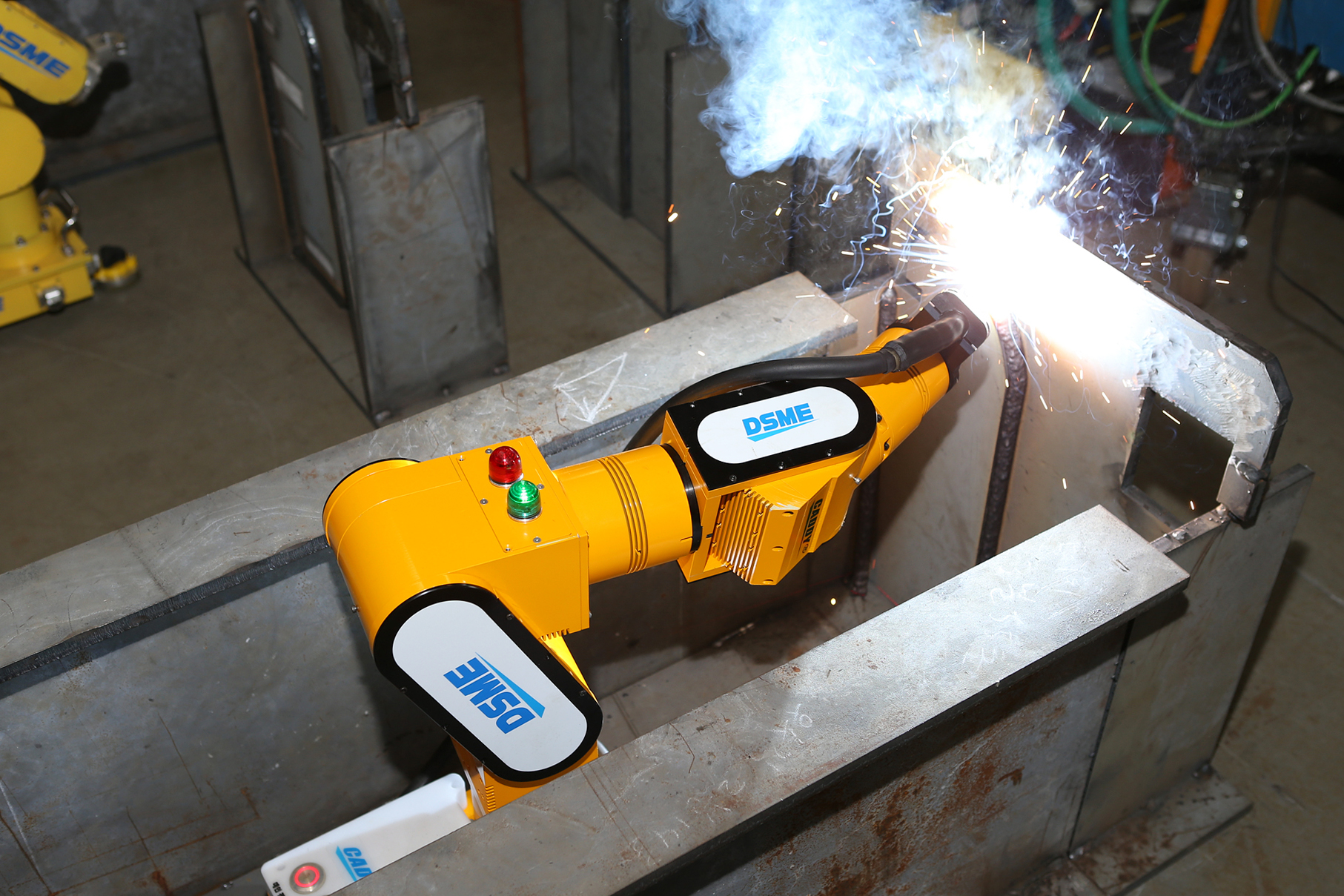A robot invasion is underway in one of the last labor-intensive industries--shipbuilding. In search of lower costs and speedier construction times, Hyundai Heavy Industries Co. and Daewoo Shipbuilding & Marine Engineering Co. are embracing automation to build critical sections of their giant container ships, some of which extend 400 meters in length.
Boosting productivity is mission critical in an industry that needs about 200 people to build one vessel and faces severe pricing pressure. A sharp drop in oil since the second half of 2014, when a barrel of oil fetched more than $100 compared with over $60 now, has hit vessel orders hard, forcing ship-makers to cut thousands of jobs and shutter some docks. Ship prices have tumbled close to 10% during the past three years, Bloomberg reported.
“In this current environment, it’s very important to cut costs wherever possible,” said Lee Jae-won, an analyst at Yuanta Securities Korea Co. in Seoul. “These automation efforts will begin to pay off once orders start to show clearer signs of recovery, probably from the second half of this year.”
Hyundai Heavy, the world’s biggest shipbuilder, and its two affiliates delivered 138 vessels last year, compared with about 180 in 2016.
Robotic Arms
In what Hyundai Heavy claims is a global first, a 670-kilogram industrial robot—designed and tested in-house—can curve and weld steel plates for the front and back of vessels through remote connectivity between the machine and design software.
The Ulsan-based shipbuilder plans to start using the robot next year, a move that would cut welding time by two thirds, reduce the number of skilled workers, and save about 10 billion won ($9.4 million) annually, a company spokesman said.
Hyundai Heavy plans to build an automated plant, also employing robotic arms, to supply these steel parts to its two affiliated shipbuilding units, Hyundai Mipo Dockyard Co. and Hyundai Samho Heavy Industries Co.
To further automate its shipyards, Hyundai Heavy is developing more robots for other welding and paint jobs.
Caddy’s Help
Over at Daewoo Shipbuilding, the company has been using a 16-kilogram robotic arm to weld steel parts in its construction of ice-breaking liquefied natural gas carriers, delivering five of these vessels since 2016. Nicknamed Caddy, these arms are able to work on the hull to fuse steel structures together in a confined space, a spokesman for the Geoje-based company said.
Caddy has helped Daewoo Shipbuilding save about 4.5 billion won in construction costs for each vessel. Based on that success, the shipbuilder is developing an even smaller welding robot that will weigh 14.5 kilograms.
It’s still early days for shipbuilding robots. By comparison, about 70% of car manufacturing is automated, boosting the pace of production.
Modern container ships are massive and require about 200 skilled workers to build one that can carry 20,000 standard containers, starting from the first step of production when steel is cut, according to Daewoo Shipbuilding.
A key automation challenge is that all vessels are built to different specifications depending on the customer, said Oskar Levander, vice president of concepts and innovation for the marine business at Rolls-Royce Plc. A car model shares the same chassis and major components like doors and dashboards.
“The shipbuilding industry is so fragmented and the customers are very fragmented,” Levander said. “Every ship-owner has their own preference in what they want in a ship.”
Still, shipbuilders are investing in technology to reap benefits when the industry rebounds. South Korea’s Samsung Heavy Industries Co., the world’s third-biggest shipyard, expects vessel prices to recover this year.


